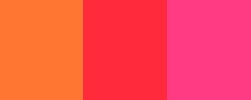Color Theory 101, Part 2

Last week we began talking about color theory and we discussed analogous color. Let’s talk about this more.
Last week, we mentioned the beginning stages of what analogous color is. I mentioned that we can have several colors that are similar to one another, but yet different. That’s almost right, but not quite. What we looked at last week is really what is called “monochromatic”. I didn’t want to confuse you with the term monochromatic, because a lot of people that hear that think that we are talking about a single color. What we are really talking about when we say monochromatic is a single hue, but several tints or shades. This is what we looked at last week. Remember, as a scheme, this is monochromatic.

Now to truly discuss analogous color schemes we have to break out the color wheel. The color wheel is a circular pattern of colors that go from one hue to the next in a continuum. Take a look at the next image.

You see that there is an arrow going accross a series of hue values. These would be analogous to one another. As monochromatic was the use of a single hue with different shades, this is the use of two or more hues to provide a color scheme. In other words, you use two different colors next to each other on the color wheel. So this could be purple and blue or red, purple and blue etc… Take a look at the next color scheme to see what I mean.

You can see that we have a couple of actual hues here. I am being subtle, so that you can see the usefulness of the idea. I don’t particularly like the combination of a fully saturated yellow coupled with a fully saturated green. But when you desaturate the two, you get a nice combination. Compare the next two images.


While the first one is sort of light and Springish (as in the season of Spring), the second one actually makes me feel a little queasy. That’s just my opinion, but you may feel the same way. That doesn’t mean that the second combination doesn’t have its place in the world. A few colleges have chosen green and yellow for their school colors. And you all know about those Oakland Athletics right?
Just to recap, let’s go over what we have talked about. We have spent the last two weeks talking about designing using analogous color. Analogy means that things are alike, or have something in common. We talked last week about Monochromatic color schemes using a single hue with several shades. See the image below.

This week we talked about using two or more colors that are next to each other on the color wheel. See the image below.

I hope you have soaked this all in. I know it can be a little confusing if you have never been exposed to this, but practice at home playing with these colors and others. You might also go out on the web a see what people are using as color schemes. Next week, we will continue with more color theory.

